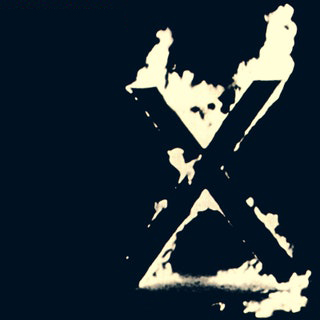For this semester-long project you will edit, design, and produce an illustrated book from the content of ten linked Wikipedia entries. Everyone will start from the same place: the Wikipedia entry for Typography. From within this entry you will choose a word or phrase which is hyperlinked to another Wikipedia entry, and collect the main column text for that term. From this second term you will choose another hyperlinked term, and so on, for 10 terms. (As an example, I collected the following string: typography, phonetic, manner of articulation, trills, bird calls, mimics, signal, etc.) In this editorial procedure, you will make an associative series which implicitly makes a particular argument about the consequences or connections of typography as a practice and a discipline. Or perhaps you’ll make another sort of exposition from this beginning.
phase 1: typography
In this two week project we will explore the visual articulation of semantic structure in an HTML document. The idea is to visually abstract the semantic structure from a marked-up document.
We will begin by reading the Wikipedia entry on typography and analyzing its nesting HTML structure. We will take this marked-up document and link it to a new style sheet (CSS). We will work with a CSS sheet which declares a value for every possible property of every HTML selector.
In this exercise we will explore CSS as a means to abstractly give form to the semantic structure of the document. Develop your CSS in a way such that no words are legible, but all html tags are visually articulated, as well as the total semantic hierarchy and structure of the HTML. The point is to show the semantic structure of the document in a clear way but also as vividly and dramatically as possible. Focus on how you can most wildly visually distinguish the different semantic elements while also showing their hierarchical relationships.
The only word that should be legible is “Typography,” the document’s h1.
Use a basic code editor to edit your CSS file. This one’s good.
CSS syntax
h1 {
color: blue;
}
selector {
declaration (property=value)
}
Here’s description of all the style properties.
Selectors
- html
- body
- h1
- h2
- h3
- h4
- p
- em
- a
- ul
- ol
- li
- blockquote
Some notes:
As you work on the CSS, be sure that the html is responsive to different screen widths.
Only work in greyscale.
This is an exercise in purely typographic form. No images. Set <img> selector to display: none.
No divs or classes.
phase 2: text
Make a series of ten hyper-linked Wikipedia entries. Consider this as a thematic or narrative series. What implicit statements are you making about typography, or more generally, about knowledge or culture? We will discuss and assess the interest of each series in class sessions. Perhaps the point is to leave any particular sense of typography entirely behind. Typography then could be understood as a sort of gateway drug, to bigger and better highs. In any case the series should, taken in its full course, present a sort of narrative about all the content that you are assembling. Each entry is a chapter in your book. Conceive of a title for the set of entries — this will be the title of your book.
Once you have determined your series of entries, copy and paste them into your indesign document and completely mark up the text with your indesign style sheets.
Present your set of entries to the class.
phase 3: image
For each entry in your series, curate ten images that illustrate the content. Consider how the images both relate to the content of the entry as well as to themselves as a consistent series. Each image should be captioned. Find images that are high resolution enough for printing.
Once you’ve collected your images, lay them out on the pages on your document. Consider whether the images should be precisely arranged alongside a particular passage in the text, or whether they can appear more autonomously. Construct a basic page grid to guide your layout.
Make a ten minute didactic presentation to the class about one of your Wikipedia entries. Use the ten images you’ve collected to structure your presentation. Speak for one minute about each image.
Present one chapter to the class in which text and images are arranged together.
phase 4: other elements
Design the following around the chapters in your book: title page, table of contents, colophon, front and back cover, spine. Book title! As you design your cover and title your book, think about the overall “argument” you’re making about typography, through your selection of entries and images. What do all the chapter add up to? What trajectories of content are you tracing and mapping in the book? Feel free to be bold, humours, polemical, minimal, deadpan, etc.
Present sketches of your front and back covers along with the spine.
phase 5: print and beyond
Send your file to a print on demand service and print five copies.
While we wait for these to arrive, we will make a webpage that inventories and publicizes every book in the class and makes it possible for our future counter-public to purchase.
We will simultaneously congratulate ourselves and listen to records during our final class.
